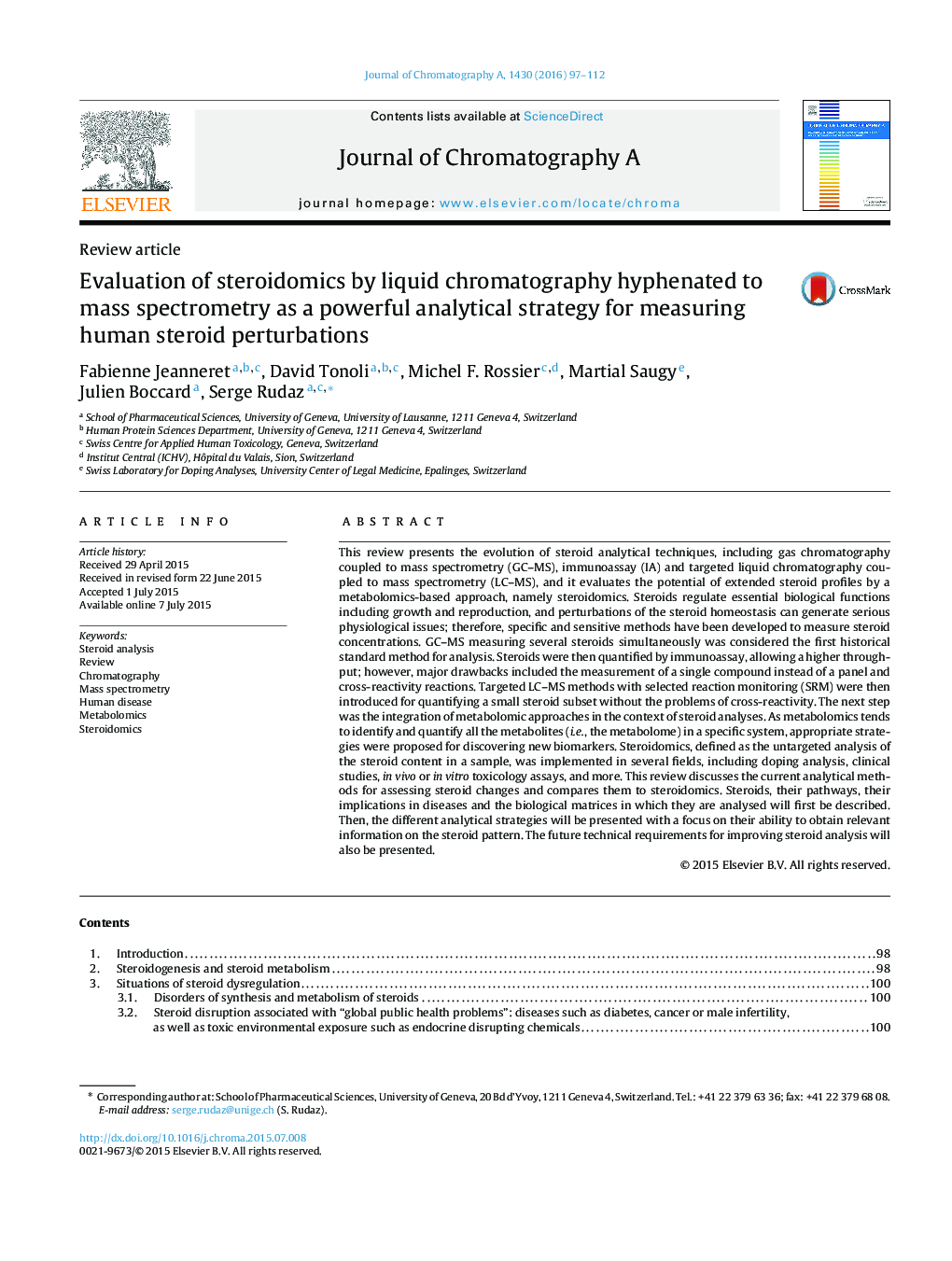| Article ID | Journal | Published Year | Pages | File Type |
|---|---|---|---|---|
| 1198961 | Journal of Chromatography A | 2016 | 16 Pages |
•Steroid analysis is reviewed in the context of human steroid perturbations.•Presentation of cases of steroid dysregulations.•Steroidomics as a metabolomic based approach is presented.•Future of steroid analysis is critically discussed.
This review presents the evolution of steroid analytical techniques, including gas chromatography coupled to mass spectrometry (GC–MS), immunoassay (IA) and targeted liquid chromatography coupled to mass spectrometry (LC–MS), and it evaluates the potential of extended steroid profiles by a metabolomics-based approach, namely steroidomics. Steroids regulate essential biological functions including growth and reproduction, and perturbations of the steroid homeostasis can generate serious physiological issues; therefore, specific and sensitive methods have been developed to measure steroid concentrations. GC–MS measuring several steroids simultaneously was considered the first historical standard method for analysis. Steroids were then quantified by immunoassay, allowing a higher throughput; however, major drawbacks included the measurement of a single compound instead of a panel and cross-reactivity reactions. Targeted LC–MS methods with selected reaction monitoring (SRM) were then introduced for quantifying a small steroid subset without the problems of cross-reactivity. The next step was the integration of metabolomic approaches in the context of steroid analyses. As metabolomics tends to identify and quantify all the metabolites (i.e., the metabolome) in a specific system, appropriate strategies were proposed for discovering new biomarkers. Steroidomics, defined as the untargeted analysis of the steroid content in a sample, was implemented in several fields, including doping analysis, clinical studies, in vivo or in vitro toxicology assays, and more. This review discusses the current analytical methods for assessing steroid changes and compares them to steroidomics. Steroids, their pathways, their implications in diseases and the biological matrices in which they are analysed will first be described. Then, the different analytical strategies will be presented with a focus on their ability to obtain relevant information on the steroid pattern. The future technical requirements for improving steroid analysis will also be presented.
